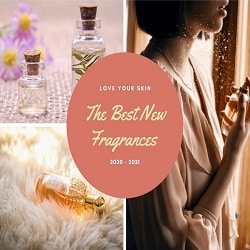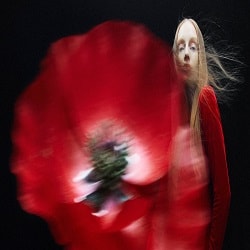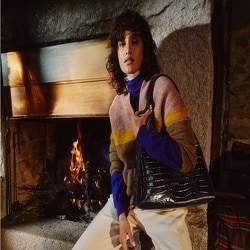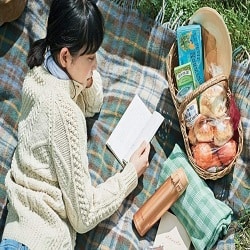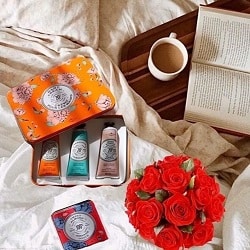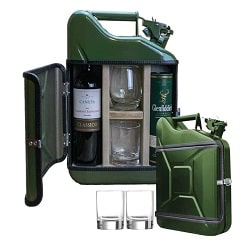Photo: Joanna Margan, Vinexpo Hong Kong 2018
Both are beyond the scope of this article. Suffice to say: do your homework before jumping in. I’m assuming that you’re reading this because you’ve got a trade show coming up and you’re wondering how to make the most of it.
1. Space Jam
Trade show floor plans can differ widely, as can booth design. Knowing exactly how much space you’ll have, and how it’s laid out, is key to planning correctly. If you’ve got three square metres and are planning on displaying twelve different wines, you might want to think again. Likewise, if you’ve got 200 square metres and five wines, you’re going to want to figure out how best to use that space.
In an ideal world, you’ll have enough space that you and your team can comfortably stand and present your wines to passers-by without tripping over one another. You’ll also want to have some dedicated meeting space so that you can sit down (or stand around) with your business partners or prospects and have a discussion without interruption.
2. Ample samples
This is often your best chance to get your wine in front of a prospective buyer. It’s vital that you have enough of the right wines there when you need them. The number of individual wines you show, and the number of bottles of each that you send, will vary from producer to producer and event to event. There’s no magic formula, unfortunately.
Work with your logistics person or freight forwarder to ensure that your samples get to where they’re supposed to be when they’re supposed to be there. Allow plenty of time for things like customs clearance, and it never hurts to have a backup plan either – though always keep event rules and local laws in mind.
Work with your customers and prospective customers, ahead of time, to establish if there are any wines that they would specifically like to try with you. Ensure that you have those samples ready to go. Likewise, if you need ice buckets or decanters (or port tongs or anything else), make sure you’ve got them.
3. If you build it, they will come (or maybe they won’t)
The work starts long before the show opens. It’s simply not enough to show up on the first day and expect buyers to form an orderly queue. Yes, the best events will have an abundance of qualified buyers, but remember that you’re competing for their attention alongside hundreds of other producers and thousands of other products.
Foot traffic during the show is certainly a valid means of developing business, but if that’s all you’ve got planned then you’re wasting your time and money. Book meetings ahead of time with your existing partners, but remember that trade shows are a new business opportunity too.
Take advantage of all the tools available to you. Most trade shows will have a website and/or app that will provide visitors with a list of exhibitors that they can examine ahead of time. Many of these directories will just provide basic information as standard, such as your company name, country of origin, stand number and, hopefully, some contact information. Exhibitors are often given the option of adding supplementary information, and it’s usually a simple matter of logging in and filling out some fields.
Don’t assume that prospective buyers will just see your name and come to you. Take the time to fill that stuff out with relevant, concise information about your winery, products and representatives in attendance. There are plenty of cantinas in Veneto and bodegas in Rioja, so give your prospect the detail they need to realise that you’re worth a visit and a meeting.
4. LinkedIn isn’t just for motivational quotes
LinkedIn is a vastly underused platform in the wine business. Use that to your advantage by putting yourself out there and asking your network for meetings. Avoid spamming industry groups (they tend to get very little quality traffic anyway) and instead, make use of posts and articles. The organic reach you can get from these might surprise you, and paid advertising is an option too.
For the purposes of setting up some meetings, there’s no need to get fancy. A well-written post that follows a few simple guidelines is likely to do the trick. To write a good post, you don’t need to an especially talented writer, but you should avoid generic, boilerplate copy.
“Chateau Generique will be at Vinexpo Bordeaux, Hall 2 Stand 4. We are waiting for you.”
Anyone in the wine business that uses LinkedIn will have seen a million of these. I don’t know what sort of hit rate they get, though I can’t imagine it’s high. If you’re already an icon producer (think Torbreck, Vega Sicilia and Ornellaia), you don’t need to do this. If you’re not, you need to do more than this. Far better would be for you to get specific (and maybe even slightly personal).
Chateau Specifique will be at Vinexpo Bordeaux. We’re actively looking for importers in Hong Kong, Switzerland and Ireland, and interested in meeting importers elsewhere that are looking for organic Bordeaux red, white and crémant. Get in touch here or by emailing charlie@chateauspecifique.com to book an appointment with us. We speak English, French, German and Mandarin.
The above is an imperfect illustration but hopefully, you get the idea. Don’t assume that people will come to you, and do be sure to spell out the key details to give you the best chance of ultimately attracting the right people.
4.1. On graphics and illustrations
Another small point here is on how you craft that communication. My friend and very talented Bordeaux-based illustrator/designer Charlie Padgett may disagree, but in my opinion graphic design is not the crucial component.
On LinkedIn, you would be far better off writing a short, specific piece of text with relevant hashtags (things like #wine and #winebusiness as well as referring to the event itself, e.g. #vinexpo) and tagging the event page where applicable (type @ when writing the post to search for it). Doing this is likely to make you more findable than a beautiful graphic that contains all that juicy text within the image. Of course, if you’ve got the budget, do both. Note: I don’t know Charlie’s rates, but I know his work is incredible!
5. Know your offer (and communicate it clearly in writing)
Have all your pricing info to hand either in a physical or virtual document. Be sure to specify the incoterms you are proposing along with any other info relevant to your offer. You should have all of this info already, it’s just a matter of putting it in some sort of format you can share with your prospect.
You could have a glossy brochure or a simple price list, depending on your budget and the image you’re trying to convey to the world. I expect that more and more people will shun printed documents at these events and instead take photos or ask for PDFs, so having a tablet with a digital version is advisable.
Whatever way you do it, it’s vital that you can communicate your offer clearly. Offering your wine at €3 per bottle EXW (“ex-works”) is a very different proposition than offering €3 CIF (“cost, insurance, freight”). The difference could make a deal untenable for you or the prospect, so not having this stuff laid down early in black and white is asking for trouble later.
6. Language barriers
Wine is a truly international business, and trade shows attract people from all over the world. Consider your language capability and plan accordingly. If you’re going to a trade show in a country whose language you don’t speak, you should think about getting an interpreter of some sort or risk not being able to communicate with potential buyers.
From experience, I can suggest that you don’t go to a show in mainland China without either speaking Mandarin yourself or enlisting the services of a Chinese speaker. ProWein and Vinexpo are decidely more international and English-friendly, although you’re likely to hear more English at Vinexpo Hong Kong than at its Bordeaux equivalent. If in doubt, establish ahead of time whether the person you’re meeting speaks your language, or whether you’ll need to make a special arrangement.
Wherever in the world, your show happens to be, it’ll pay to take the steps to overcome language barriers. Ensure that relevant materials (such as your price list and, in some cases, your business card) are translated into the relevant language.
7. Dress and behave professionally
Trade shows are business-to-business (B2B) events and as an exhibitor, you are professionally representing your company. As a result, it’s advisable that you dress and behave “professionally”.Granted, this means different things in different contexts. As a gross generalisation, there are different (read: stricter) implications for those representing classified growth Bordeaux and other classically “fine” wine than for their counterparts selling new world wines. There are also practical considerations such as the weather (south China in May is very hot and very humid, for example!) and cultural norms or expectations.
I don’t recommend dressing up in silly costumes (think a giant corkscrew or an inflatable bunch of grapes) just to attract attention. I’ve seen them at trade shows, and they’re usually met, at best, with indifference. Gimmicks like that, if appropriate at all, are usually better suited for consumer tastings and events. Most buyers don’t want to sit down and negotiate the price with a person dressed up as a wine bottle.
8. Follow up!
Trade shows are networking events, so shake hands and exchange business cards – and then follow up! As an exhibitor trying to sell your wine, it’s simply not enough to meet and then wait for your prospect to get in touch. They’ll have met just as many people as you have, and often many more. They’ll have a stack of business cards to go through and price lists, brochures and offers to consider. You need to get out in front of all of that.
Follow up with everyone that you met. Add them on LinkedIn, and/or write them a short email thanking them for their time and follow up on any discussion points or questions there might have been. Trade shows are an intense few days but life goes on afterwards, and it’s very easy to lose track of time and momentum. Seize every opportunity to make a new contact.
This is an edited version of an article that originally appeared on my website.



